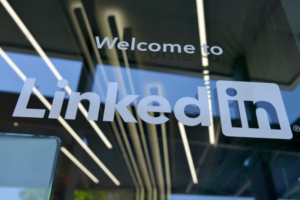Generative AI is a cutting-edge technology that harnesses the power of artificial intelligence to create original and creative content. It learns from vast datasets and can generate human-like text, images, music, and more. This innovative field has wide-ranging applications in art, literature, language processing, and automation, revolutionizing content generation and pushing the boundaries of what machines can achieve in terms of creativity and human-like output. Generative AI represents a transformative leap in AI capabilities, with profound implications for numerous industries and creative endeavors. Explore the world of Generative AI, where machines create art, music, and more.

Understanding Generative AI
Generative AI, short for Generative Artificial Intelligence, is a groundbreaking technology that has transformed how we create content and generate data. At its core, Generative AI refers to a class of artificial intelligence algorithms and models designed to produce original and creative output by learning from large datasets. Unlike traditional AI systems that rely on rules and predefined patterns, Generative AI has the remarkable ability to generate new content, such as text, images, music, and more, that can be indistinguishable from human-created content.
This innovative technology has applications in various fields, including art, literature, music composition, natural language processing, and scientific research. Generative AI models like GPT (Generative Pre-trained Transformer) have gained popularity for their ability to generate human-like text. They have been used for content generation, language translation, and even chatbot development.
Generative AI holds immense potential for enhancing creativity, automating content generation, and assisting in tasks requiring human understanding and creativity. It continues to push the boundaries of what’s possible in both technology and creativity, offering exciting prospects for the future.
Understanding Generative AI, Its Impacts and Limitations
How and When was Generative AI Founded?
Generative AI, as a field of study and development, does not have a specific founding date or a single entity responsible for its creation. Instead, it has evolved through the efforts of many researchers and organizations.
The roots of Generative AI can be traced back to the early days of artificial intelligence research in the mid-20th century. Researchers began exploring the concept of using algorithms and models to generate content, such as text and images, even in those early days. However, it was the advancement of machine learning techniques, particularly deep learning and neural networks, that laid the foundation for the modern development of Generative AI.
One significant milestone in the evolution of Generative AI was the introduction of Generative Adversarial Networks (GANs) by Ian Goodfellow and his colleagues in 2014. GANs provided a framework for training generative models by pitting two neural networks against each other, one generating content and the other evaluating its authenticity. This breakthrough led to significant advancements in generating realistic images and other forms of content.
Subsequently, various Generative AI models and architectures, such as Variational Autoencoders (VAEs) and Transformers, were developed and refined, further expanding the capabilities of AI-generated content.
In essence, Generative AI has been shaped by the ongoing contributions and innovations of researchers, engineers, and organizations over several decades, with notable developments occurring in the 21st century. It continues to evolve rapidly, with no single founding moment or entity but rather a continuous progression of ideas and technologies.
How does Generative AI work?
Generative AI uses advanced machine learning techniques, particularly deep learning, to create new content similar to, or sometimes indistinguishable from, content in its training data. The fundamental process involves training a generative model on a large dataset and then using that trained model to generate new content. Here’s a simplified overview of how it works:
Data Collection
A diverse and extensive dataset containing examples of the type of content you want to generate is collected. This dataset can consist of text, images, audio, or any other form of data, depending on the specific task.
Model Architecture
A Generative AI model is designed and implemented. Different types of models can be used, including Generative Adversarial Networks (GANs), Variational Autoencoders (VAEs), and Transformers, depending on the task and requirements.
Training
The model is trained on the collected dataset. During training, the model learns the patterns, features, and statistical relationships present in the data. For example, a text generation model learns the syntax, grammar, and vocabulary from a text corpus.
Loss Function
To guide the learning process, a loss function is defined. The loss function quantifies the difference between the generated content and the real data in the training set. The model’s goal is to minimize this loss function.
Generation
Once the model is trained, it can generate new content by taking an initial input (often called a seed or prompt) and then using its learned knowledge to generate content that is coherent and relevant based on that input.
Fine-Tuning (Optional)
After the initial training, the model can be further fine-tuned on specific tasks or domains to enhance its performance in generating content that aligns with certain criteria or requirements.
Evaluation and Refinement
The generated content is evaluated for quality, relevance, and coherence. The model may undergo iterative refinement based on user feedback or additional training data to improve its output.
It’s important to note that the success of Generative AI models depends on the quality and quantity of the training data, the architecture of the model, the choice of hyperparameters, and the optimization techniques used during training. Generative AI has been used in various applications, including natural language generation, image synthesis, music composition, and more, revolutionizing content creation and creativity across different domains.
Generative AI Explained: What is it and how does it work?
What are the benefits of Generative AI?
Generative AI offers a wide range of benefits across various industries and applications. Some of the key advantages include:
Creative Content Generation
Generative AI can autonomously create content such as text, images, music, and videos, enabling automation of creative tasks. This can save time and resources for content creators and artists.
Enhanced Productivity
It can assist professionals in generating reports, summaries, and content for marketing, research, and other domains, increasing productivity and reducing manual effort.
Personalization
Generative AI can generate personalized recommendations, product suggestions, and content tailored to individual preferences, improving user engagement and customer satisfaction.
Language Translation
It enables accurate and efficient text translation between languages, facilitating communication and breaking language barriers.
Natural Language Processing
Generative AI models can understand and generate human-like text, making chatbots, virtual assistants, and customer support services more conversational and effective.
Content Variation
It can create content variations, such as generating multiple design options or product descriptions, allowing for A/B testing and optimization.
Creative Assistance
Generative AI can provide inspiration and creative ideas to writers, designers, and artists, helping them overcome creative blocks and explore new concepts.
Data Augmentation
In data science and machine learning, it can be used to augment datasets by generating synthetic data improving model training and generalization.
Scientific Research
Generative AI can assist in generating hypotheses, simulating experiments, and exploring complex scientific problems, accelerating research processes.
Cost Reduction
By automating tasks that traditionally require human labor, Generative AI can lead to cost savings and operational efficiency.
Accessibility
It can make information more accessible through automatic text-to-speech and speech-to-text conversion, benefiting people with disabilities.
Artistic Exploration
Artists and musicians can use Generative AI to experiment with new creative ideas and styles, expanding the boundaries of their art.
Rapid Prototyping
In design and engineering, it can quickly generate prototypes and concepts, expediting the product development process.
Generative Design
It can optimize architectural and engineering designs, considering various constraints and objectives to produce innovative solutions.
While Generative AI offers numerous benefits, it also raises ethical and societal considerations, including concerns about content quality, bias, and job displacement. Therefore, it’s important to use this technology responsibly and consider its potential implications on a case-by-case basis.
What are the limitations of Generative AI?
Generative AI, while a powerful and promising technology, has several limitations and challenges that need to be considered:
Quality and Coherence
Generative AI can produce content that is sometimes of variable quality and may lack coherence. For example, text generated by AI can contain grammatical errors, factual inaccuracies, or incoherent sentences.
Bias and Fairness
AI models can inherit biases present in their training data, leading to biased or discriminatory content generation. Efforts are needed to mitigate these biases and ensure fairness in generated output.
Lack of Understanding
Generative AI models often lack true comprehension of the content they generate. They generate content based on statistical patterns but do not understand context or meaning.
Ethical Concerns
The use of AI for content generation can raise ethical concerns, particularly when generating deep fakes, misinformation, or potentially harmful content.
Data Dependency
The quality of generated content is highly dependent on the quality and quantity of the training data. Limited or biased training data can result in subpar output.
Control and Interpretability
Users may have limited control over the generated output, making it challenging to fine-tune or customize AI-generated content. Additionally, understanding how AI models arrive at their decisions can be complex.
Overfitting
AI models can sometimes produce content that closely resembles the training data but lacks creativity or diversity. This can result in content that feels formulaic or repetitive.
Resource Intensive
Training and using large Generative AI models can be computationally intensive and require significant hardware resources, making them less accessible to smaller organizations and individuals.
Copyright and Ownership
There can be legal and ethical questions surrounding ownership and copyright of content generated by AI, as it blurs the line between human and machine creation.
Verification
Authenticating the source of generated content can be challenging, leading to potential issues of trust and credibility.
Contextual Understanding
Generative AI models may struggle to generate content that requires nuanced understanding of cultural, emotional, or contextual factors.
Privacy
Generating content, such as deepfake videos, can raise privacy concerns, as individuals’ likenesses or voices can be manipulated without consent.
Job Displacement
The automation of content generation tasks using AI may lead to job displacement in industries that heavily rely on human content creators.
Addressing these limitations requires ongoing research, responsible development, and ethical guidelines to ensure that Generative AI technologies are used in ways that benefit society while mitigating potential risks and challenges.
Generative AI vs. AI
Generative AI is a subset of artificial intelligence (AI). It specializes in generating new content or data, such as text, images, music, and more, based on patterns it has learned from training data. AI, on the other hand, is a broader field encompassing various technologies and approaches that aim to simulate human intelligence, including reasoning, learning, problem-solving, and perception. Here are the key differences between Generative AI and AI:
Focus and Purpose
- Generative AI: Primarily focused on generating creative and human-like content. Its main purpose is content generation, such as text generation, image synthesis, and artistic creation.
- AI: Encompasses a wide range of capabilities, including natural language processing, computer vision, robotics, decision-making, and more. AI aims to mimic human intelligence and solve a variety of tasks and problems.
Application Areas
- Generative AI: Commonly used in creative fields, content generation, and specific applications like language generation, image generation, and music composition.
- AI: Applied across diverse industries and domains, including healthcare, finance, autonomous vehicles, recommendation systems, customer service, and many others.
Techniques and Algorithms
- Generative AI: Often relies on specialized models and architectures such as Generative Adversarial Networks (GANs), Variational Autoencoders (VAEs), and Transformers for content generation.
- AI: Utilizes a wide range of techniques, including machine learning, deep learning, reinforcement learning, rule-based systems, and more, depending on the specific task.
Versatility
- Generative AI: Specializes in content generation and may be better suited for tasks outside its primary domain.
- AI: Has the potential to perform a wide variety of tasks, from image recognition to language translation to game playing, depending on the design and training of the AI system.
Output
- Generative AI: Primarily generates content, such as text, images, or music, as its primary output.
- AI: Produces various forms of output, including decision-making, problem-solving, automation of tasks, and interactions with the physical world through robotics.
Generative AI is a specialized branch of AI that excels in creative content generation, while AI encompasses a broader spectrum of technologies and applications aimed at simulating human intelligence and solving a wide range of tasks and challenges. Generative AI is just one facet of the larger field of artificial intelligence.
Is GPT a Generative AI?
Yes, GPT (Generative Pre-trained Transformer) is a type of Generative AI. GPT is a specific model architecture within natural language processing (NLP) that has demonstrated impressive capabilities in generating human-like text. It’s a prime example of a Generative AI model designed for text generation.
GPT models are trained on large text datasets and learn to generate coherent and contextually relevant text based on their input. These models have been used for various NLP tasks, such as language translation, text summarization, question answering, and chatbot development, as well as creative text generation and content creation.
In essence, GPT and similar models are Generative AI systems that leverage deep learning techniques to generate human-like text, making them valuable tools for a wide range of natural language understanding and generation tasks.
Is OpenAI a Generative AI?
OpenAI is not a Generative AI in itself; rather, OpenAI is an organization that develops and researches artificial intelligence, including Generative AI models. OpenAI has played a significant role in advancing the field of Generative AI and has developed several prominent Generative AI models, including the GPT (Generative Pre-trained Transformer) series, such as GPT-3 and GPT-4.
These GPT models are prime examples of Generative AI, specializing in generating human-like text based on the input provided to them. OpenAI’s work in this area has pushed the boundaries of what Generative AI can achieve and has led to the development of AI systems that can perform tasks like natural language understanding, text generation, and even creative writing.
So, while OpenAI is not a Generative AI itself, it is an organization at the forefront of developing and advancing Generative AI technologies.
What is the most used Generative AI?
One of the most widely used and influential Generative AI models was GPT-3 (Generative Pre-trained Transformer 3), developed by OpenAI. GPT-3 gained significant attention and popularity in the AI community and beyond due to its impressive natural language processing capabilities and its ability to generate coherent and contextually relevant text.
GPT-3 was used in a wide range of applications, including:
Content Generation
It could generate human-like text for various purposes, such as writing articles, creating chatbots, and generating code snippets.
Language Translation
GPT-3 demonstrated proficiency in translating text between languages.
Text Summarization
It could summarize long pieces of text into concise summaries.
Question Answering
GPT-3 could answer questions based on text input.
Conversational AI
It powered chatbots and virtual assistants to engage in more natural and context-aware conversations.
Creative Writing
GPT-3 could generate poetry, stories, and other creative pieces.
Please note that the landscape of Generative AI evolves rapidly, and new models and advancements may have emerged since my last update. Models like GPT-4 or other successors may have gained prominence, and their usage may have expanded. To determine the most used Generative AI at any given time, it’s essential to refer to the latest developments and trends in the field.
What GenAI can create?
Generative AI (GenAI) can create various content across various domains. Its creative potential extends to generating content such as:
Text
- Creative Writing: GenAI can compose poetry, short stories, and essays in various styles and genres.
- Content Generation: It can automatically produce articles, product descriptions, and marketing copy.
- Code: GenAI can generate code snippets, scripts, and programming code in different programming languages.
Images
- Art and Design: GenAI can create digital artwork, illustrations, and graphic designs.
- Image Synthesis: It can generate realistic or abstract images, faces, objects, and scenes.
Music and Audio
- Music Composition: GenAI can compose original music, melodies, and even entire songs.
- Audio Generation: It can create sound effects, voiceovers, and ambient sounds.
Natural Language Processing (NLP)
- Language Translation: GenAI can translate text between multiple languages.
- Text Summarization: It can generate concise summaries of lengthy articles or documents.
- Question Answering: GenAI can provide answers to questions based on textual input.
- Sentiment Analysis: It can analyze and generate sentiment-related content.
3D Models and Animation
- 3D Models: GenAI can generate 3D models of objects, characters, and environments.
- Animation: It can create animations, including character movements and special effects.
Game Content
- Game Levels: GenAI can design game levels, mazes, and challenges.
- Game Assets: It can generate game assets like characters, weapons, and items.
Conversational Agents
- Chatbots: GenAI can power chatbots and virtual assistants for natural language interactions.
Scientific and Research Content
- Hypotheses and Experiments: It can generate scientific hypotheses and simulate experiments.
- Data Analysis: GenAI can generate data visualizations and reports.
Architecture and Design
- Architectural Plans: It can assist in generating architectural designs and floor plans.
- Interior Design: GenAI can provide interior design suggestions and concepts.
It’s important to note that the quality and applicability of content generated by GenAI may vary depending on the specific model, training data, and the nature of the task. While Generative AI offers remarkable creative potential, it is essential to carefully curate and review the output to ensure it meets the desired criteria and objectives.
Examples of GenAI in the real world
Generative AI (GenAI) has found applications in various real-world scenarios across different industries. Here are some examples of GenAI in action:
Content Generation
- News Articles: News organizations use GenAI to generate news summaries or entire articles, especially for financial reports or sports updates.
- Product Descriptions: E-commerce websites employ GenAI to generate product descriptions and reviews automatically.
- Social Media Posts: GenAI can assist managers by generating engaging and relevant social media posts.
Language Translation
Online Translation Services: Platforms like Google Translate use GenAI models to provide accurate translations between languages.
Chatbots and Virtual Assistants
- Customer Support: Many businesses deploy GenAI-powered chatbots to provide immediate responses to customer inquiries and resolve common issues.
- Virtual Assistants: Devices like Amazon Echo and Google Home utilize GenAI to interact with users through natural language processing.
Creative Arts
- Art and Design: Artists use GenAI to create digital artwork, generate design elements, and explore new creative concepts.
- Music Composition: GenAI assists musicians in composing melodies and harmonies or generating background music for videos and games.
Text Summarization
Content Curation: GenAI can automatically summarize news articles, research papers, and long-form content to provide concise overviews.
Gaming
- Level Design: Game developers employ GenAI to generate game levels, maps, and challenges, saving time and resources.
- Non-Player Characters (NPCs): GenAI can create behaviors, dialogue, and interactions for NPCs in video games.
Healthcare and Medicine
- Drug Discovery: GenAI is used to analyze chemical compounds and predict potential drug candidates for various diseases.
- Medical Image Analysis: GenAI helps radiologists diagnose medical conditions by analyzing images such as X-rays and MRIs.
Content Moderation
Detecting Inappropriate Content: Social media platforms and online communities utilize GenAI to identify and filter out inappropriate or harmful content.
Language Generation
- Content Marketing: GenAI generates marketing content, including email campaigns, blog posts, and advertisements.
- Legal and Financial Documents: GenAI can draft contracts, legal documents, and financial reports based on templates.
Science and Research
- Hypothesis Generation: GenAI helps researchers explore hypotheses and simulate experiments in fields like physics, chemistry, and biology.
- Data Analysis: It generates data visualizations, charts, and graphs to aid in data interpretation.
These examples showcase the versatility of GenAI across different domains, demonstrating its potential to enhance productivity, creativity, and decision-making processes in various industries.
Generative AI for Business
Generative AI holds significant promise for businesses across various sectors. It can automate content generation, streamline customer interactions through chatbots and virtual assistants, simplify data analysis and reporting, and enhance creative content and design processes. By leveraging Generative AI, businesses can improve productivity, engage customers more effectively, make data-driven decisions, and stay competitive in an increasingly digital and data-driven world. However, businesses must approach Generative AI responsibly, addressing ethical considerations and ensuring the quality and accuracy of AI-generated content to build trust with customers and stakeholders.
The Rise of Generative AI for Business
Why is Generative AI Important?
Generative AI is of paramount importance due to its transformative impact across industries. It revolutionizes content creation, personalization, and efficiency, automating tasks, and enhancing creativity. Its language translation abilities foster global communication, while in research, it accelerates discovery. The cost savings it offers, coupled with innovative user interfaces, provide a competitive edge. However, the responsible use of Generative AI is crucial, addressing ethical and bias concerns, to harness its vast potential and ensure a more connected, efficient, and creative future.
A Narrative on Generative AI – How it Simplifies Our Lives
Once upon a time in a world where technology constantly pushed the boundaries of human imagination, there existed a remarkable innovation known as Generative AI. It was a digital marvel that had the power to create, dream, and inspire like no other.
In the heart of a bustling metropolis, a young artist named Maya discovered the wonders of Generative AI. She had always been passionate about art but often found herself stuck in creative ruts. One day, while scrolling through her favorite art forum, she stumbled upon a post about a revolutionary AI tool.
Curiosity piqued, Maya decided to give it a try. She downloaded the software and began to explore its capabilities. To her amazement, the Generative AI could generate a wide array of content, from paintings to music, poetry to prose, and even 3D models. It was as if she had unleashed an artistic genie from a digital lamp.
Maya started by using the AI to create abstract paintings. With a few prompts and tweaks, she watched in awe as the AI brought her visions to life on the canvas, with intricate patterns and vibrant colors she had never imagined. It was as if the AI had tapped into her subconscious and translated her thoughts into art.
Encouraged by her initial success, Maya began collaborating with the AI on more ambitious projects. She would provide it with a theme or concept, and the AI would generate a piece of art that pushed the boundaries of creativity. Together, they created stunning landscapes, surreal dreamscapes, and thought-provoking abstract pieces that captivated art enthusiasts around the world.
But Maya didn’t stop at visual art. She experimented with music, letting the AI compose melodies and harmonies that resonated with the deepest emotions of her soul. She wrote stories and poetry with the AI, co-authoring tales that were both imaginative and touching.
As the years passed, Maya’s collaborations with Generative AI evolved, and her work gained recognition in the art world. Critics marveled at the unique blend of human creativity and AI innovation in her pieces. She had discovered a new way of expressing herself and had bridged the gap between the human imagination and the limitless potential of technology.
Generative AI had not only transformed Maya’s life but had also ushered in a new era of artistic exploration. It became a tool for artists, writers, musicians, and creators of all kinds to break free from creative constraints and push the boundaries of what was possible. With Generative AI by their side, humanity unlocked a universe of creativity that knew no bounds.
And so, the story of Generative AI continued to unfold, a testament to the boundless potential of human-machine collaboration in the world of art and beyond. It was a story of innovation, inspiration, and the unending quest to explore the limitless realms of creativity.
Future of Generative AI
The future of Generative AI is poised for remarkable growth and impact. We anticipate ever more creative and context-aware AI-generated content, collaborating seamlessly with human creators. Personalization will reach new heights, delivering tailored experiences in entertainment, education, and beyond. Ethical considerations will drive responsible AI development, mitigating biases and enhancing transparency. Multimodal AI will fuse text, images, and audio, enriching immersive technologies. Generative AI’s role in scientific discovery, healthcare, and global problem-solving will expand, reshaping industries and improving lives. The future holds the promise of a harmonious partnership between humanity and Generative AI, unlocking unprecedented creativity, efficiency, and innovation while ensuring it serves the greater good.
Videos
Generative AI Is About To Reset Everything, And, Yes It Will Change Your Life | Forbes
How AI Could Empower Any Business | Andrew Ng | TED
Generative AI: what is it good for?
AI can do that? How generative AI is simplifying our everyday














